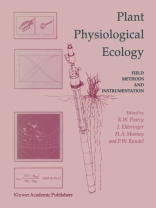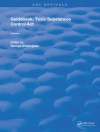capable of providing at least a relative measure of stomatal aperture were first used shortly thereafter (Darwin and Pertz, 1911). The Carnegie Institution of Washington’s Desert Research Laboratory in Tucson from 1905 to 1927 was the first effort by plant physiologists and ecologists to conduct team research on the water relations of desert plants. Measurements by Stocker in the North African deserts and Indonesia (Stocker, 1928, 1935) and by Lundegardh (1922) in forest understories were pioneering attempts to understand the environmental controls on photosynthesis in the field. While these early physiological ecologists were keen observers and often posed hypotheses still relevant today they were strongly limited by the methods and technologies available to them. Their measurements provided only rough approximations of the actual plant responses. The available laboratory equip- ment was either unsuited or much more difficult to operate under field than laboratory conditions. Laboratory physiologists distrusted the results and ecologists were largely not persuaded of its relevance. Consequently, it was not until the 1950s and 1960s that physiological ecology began its current resurgence. While the reasons for this are complicated, the development and application of more sophisticated instruments such as the infrared gas analyzer played a major role. In addition, the development of micrometeorology led to new methods of characterizing the plant environments.
J.R. Ehleringer & Harold Mooney
Plant Physiological Ecology [PDF ebook]
Field methods and instrumentation
Plant Physiological Ecology [PDF ebook]
Field methods and instrumentation
Cumpărați această carte electronică și primiți încă 1 GRATUIT!
Limba Engleză ● Format PDF ● ISBN 9789401090131 ● Editor J.R. Ehleringer & Harold Mooney ● Editura Springer Netherlands ● Publicat 2012 ● Descărcabil 3 ori ● Valută EUR ● ID 4717533 ● Protecție împotriva copiilor Adobe DRM
Necesită un cititor de ebook capabil de DRM












